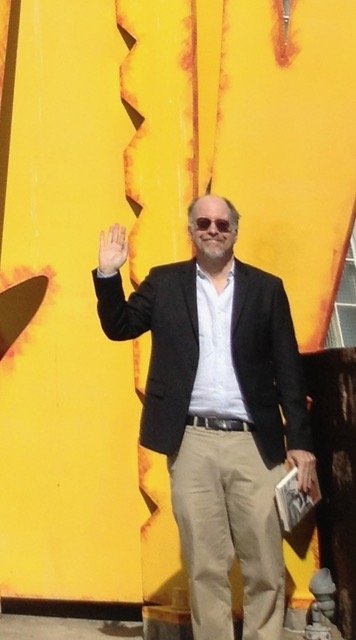How the Light Gets In
“I am sure that if the mothers of various nations could meet, there would be no more wars.” --E. M. Forster
As March got underway, snow fell on cedars in the Sierra foothills. It also fell on the beleaguered nation of Ukraine and its brave citizenry. Almost a million women and children are taking trains or walking to countries along its borders that welcome them with tea, tents, medicine, and makeshift schools as they await their uncertain futures while Ukraine’s men young and old have stayed behind and joined the fight against Putin’s war. Inspired by the grit, spirit, and voice of Ukraine’s president, Volodymyr Zelensky, the world anxiously watches and listens. In his New Yorker commentary (March 5, 2022), David Remnick called this moment “the most consequential hour in Europe since the collapse of the Soviet Union.”
This week, my friend Larry Marchant shared his feelings on the war being waged in Ukraine. “The world has entered into an awful freeze. Warnings had been ignored. Old truths were forgotten, or just optimistically ignored. Denial seeped through the old mental and spiritual pipes. All the fragile hope of life were threatened. Temperatures dropped below zero.”
In my blog “Hard Times” last week, I referenced songwriter Leonard Cohen’s deeply moving line in his song Anthem. “There is a crack in everything. That’s how the light gets in.” After reading it, Larry applied Cohen’s universal message to the resolve that has united the people of Ukraine. “The cracks brought Ukraine’s people resolve. Grit. Courage. Skill at truly fighting. Savvy. Keen wit and instinct. Stealth and feared presence. The laser sunlight they release pierces the white knuckled fear of the ignorant (Russian) soldiers sent to war thinking they were sent to patrol and police. The bear meets the bear trainers. Goliath meets his David. 🇺🇦 Watch as David starts to pick up his smooth stones, and now starts to fit the smoothest into his sling, slowly starting the circle of purpose, and truth.” Indeed, Putin has summoned up a thundercloud and is learning that the courageous, resolute Ukrainians are prepared to weather the storm.
Swelling numbers of Ukrainian refugees (mostly women and children) now face freezing temperatures and the possibility that they may never again see the husbands, sons, fathers, grandparents and lives they’ve been forced to leave behind. From a distance, I try to remain hopeful. Every day, I am inspired by the sky blue and wheat yellow colors of the Ukrainian flag that I now see everywhere. In what I wear, on a yellow fire plug touched up with blue. On a button left on a windowsill in downtown Nevada City. In fields of daffodils planted around town.
This week, blue and yellow lights lit up the Gateway Arch in St. Louis, MO. The 630-foot-high monument clad in stainless steel was intended by architect Eero Saarinen to serve as a living memorial “to Jefferson’s vision of greater opportunities for men of all races and creeds.” It also commemorates the role of St. Louis in the westward expansion of the United States. Illuminated with blue and yellow lights, I see it as a reflection of Ukraine’s wish to become a part of NATO and the EU. A reminder of the wish of Ukrainians as well as neighboring Moldova to align with the West and resist Putin’s authoritarian rule.
This morning when Kit and I woke up to snow and a return of winter, I made a pot of Cream of Wheat to warm our bodies and spirits. I wanted to be at the Ukrainian/Polish border dishing out bowls of nourishing porridge and pouring hot tea for the thousands of refugees seeking safety and haven. In that spirit, I prepared beef pot roast with mushrooms, red potatoes, carrots, cabbage, and onions for our neighbors Carol and Jim with whom we shared food and our concerns for Ukraine. For dessert, I fried apple rings in butter in a caste iron skillet with a touch of cinnamon, vanilla extract, and a topping of cream.
What, I wondered, would Ukrainians love for dessert? I checked my copy of Jewish Food: The World at Table by my friend Matthew Goodman who lives and writes in Brooklyn. There I found his recipe for Varenikes, Ukrainian Dumplings with Sour Cherry Filling. He writes, “This recipe comes from Miriam Weinstein of Manchester, Massachusetts, who learned it from her cousins, Mischa and Sophia, of Kharkov, Ukraine. Sour cherries, common in Northern and Eastern Europe, are very difficult to get in the United States, but canned may be used instead.”
Currently, I don’t have a can of sour cherries in our pantry, but I’ve made a note to add one. Today I plan to make Margie Sable’s mother Teddy’s Apple Cake. Margie’s paternal grandmother emigrated to Toronto around 1905 to escape the Russian pogroms. She and her Jewish family had lived somewhere in or near Dnipropetrovsk, now Dnipro in Ukraine (then a part of Russia). Perhaps this simple Ukrainian apple cake recipe with walnuts and raisins eventually made its way to America and now continues to nourish Margie’s family and friends in Columbia, Missouri. Food connects us all. In this consequential hour, we are all Ukrainians.
For Margie Sable’s Apple Cake recipe, visit The Common Ingredient website/food blog started in 2020 to help combat food insecurity. Visit The Common Ingredient.




